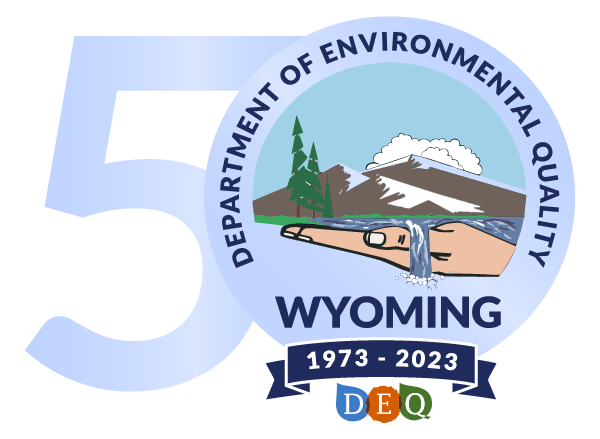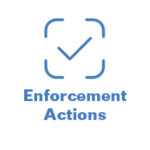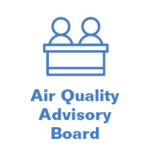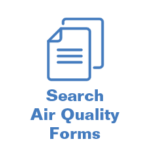- Home
- Public
- Resources
- Advanced Search
- Advisory Boards
- Careers
- District Offices
- e-Payment
- Enforcement Actions
- Meet the Director
- Mission Statement and Values
- Nondiscrimination Policy
- Outreach and Public Information
- Public Comments Online Portal
- Public Notices
- Records Requests
- Spill and Complaints
- State of the Environment
- Topics
- Divisions
- News
- Calendar
Ozone
- Home
- Air Quality
- Ozone
If the download box is not working below, please click here.
Did you know that Ownership Change Forms should be filled out when facility acquisitions occur and/or company name changes take place? The Air Quality Division has attached the Change of Ownership Forms for Minor Sources and Title V Facilities below for your convenience. These forms need to be completed and mailed to the following address:
ATTN: Planning Section
Wyoming DEQ - Air Quality Division
200 W 17th St, Ste 300
Third Floor
Cheyenne, WY 82002
It is important to submit completed ownership changes in a timely manner as IMPACT portal users will not have access to newly-acquired facilities until the completed forms are received and processed.
If you have any questions about ownership changes, please feel free to email deq-air-impact@wyo.gov or contact a staff member by phone at 307-777-7391.
Below are forms associated with ownership change.
If the download box is not working below, please click here.
Search all Air Quality webpage forms and documents below.
If the download box is not working below, please click here.
All official Wyoming State Rules and Regulations are kept at the Wyoming Secretary of State’s Office. Click here to view all current Rules and Regulations.
Ozone
Ozone is a gas comprised of three atoms of oxygen that is found both in the Earth’s upper atmosphere and at ground level. According to the US Environmental Protection Agency, ozone can be good or bad, depending on where it is found.
Good Ozone:
According to the federal government’s AirNow.gov website, ozone occurs naturally in the Earth’s upper atmosphere – 6 to 30 miles above the Earth’s surface – where it forms a protective layer that shields us from the sun’s harmful ultraviolet rays.
Manmade chemicals are known to destroy this beneficial ozone. An area where the protective “ozone layer” has been significantly depleted – for example, over the North or South Pole – is sometimes called “the ozone hole.” The United States, along with over 180 other countries, recognized the threats posed by ozone depletion and, in 1987, adopted a treaty called the Montreal Protocol to phase out the production and use of ozone-depleting substances. EPA has established regulations to phase out ozone-depleting chemicals in the United States.
Bad Ozone:
In the Earth’s lower atmosphere, near ground level, ozone is formed when pollutants emitted by cars, power plants, industrial boilers, refineries, chemical plants, and other sources react chemically in the presence of sunlight. Ozone at ground level is a harmful air pollutant.
Currently, for the 2015 Ozone National Ambient Air Quality Standards (NAAQS) – the most stringent ozone standard – all of Wyoming’s counties are meeting the standard and have been designated as attainment/unclassifiable by the U.S. Environmental Protection Agency (EPA).
However, this is not the case for the less-stringent 2008 Ozone NAAQS. In July 2012, the U.S. EPA designated all of Sublette county and portions of Lincoln and Sweetwater Counties as an ozone nonattainment area, collectively known as the Upper Green River Basin Ozone Nonattainment Designation Area (UGRB). Monitored ozone in the UGRB was in attainment for the 2008 Ozone NAAQS by the attainment date of July 2015. The UGRB remains classified as a nonattainment area. The Wyoming Department of Environmental Quality is assessing a pathway for submitting a request to the EPA to redesignate the UGRB back to attainment for the 2008 Ozone NAAQS.
Ozone is an air pollutant that can cause respiratory health effects especially to children, the elderly and people with existing respiratory conditions. People in these sensitive groups should limit strenuous or extended outdoor activities, especially in the afternoon and evening. More information on ozone and the health effects of ozone are available at the Wyoming Department of Health website, http://www.health.wyo.gov.
Wyoming DEQ’s goal is to provide simple information to make decisions about your outdoor activity. If you have compromised respiratory health, asthma, or care for the elderly or small children or are simply concerned about the quality of air you breathe, use the EPA Pollutant Breakpoint Chart of Ozone below to help plan your day accordingly.
Levels of Health Concern for Ozone
Given possible health effects and a concern for the health and safety of the local public, the Wyoming Department of Environmental Quality (WDEQ) uses the EPA’s Air Quality Index Levels of Health Concern to inform sensitive groups and the general public of potential health risks associated with exposures to elevated levels of ozone.












